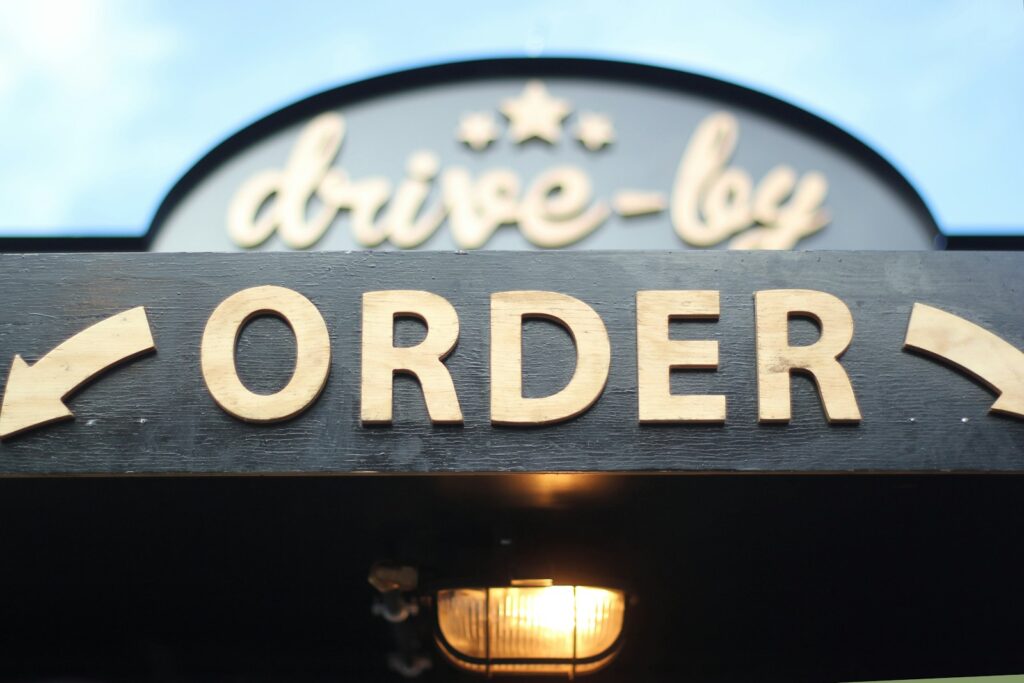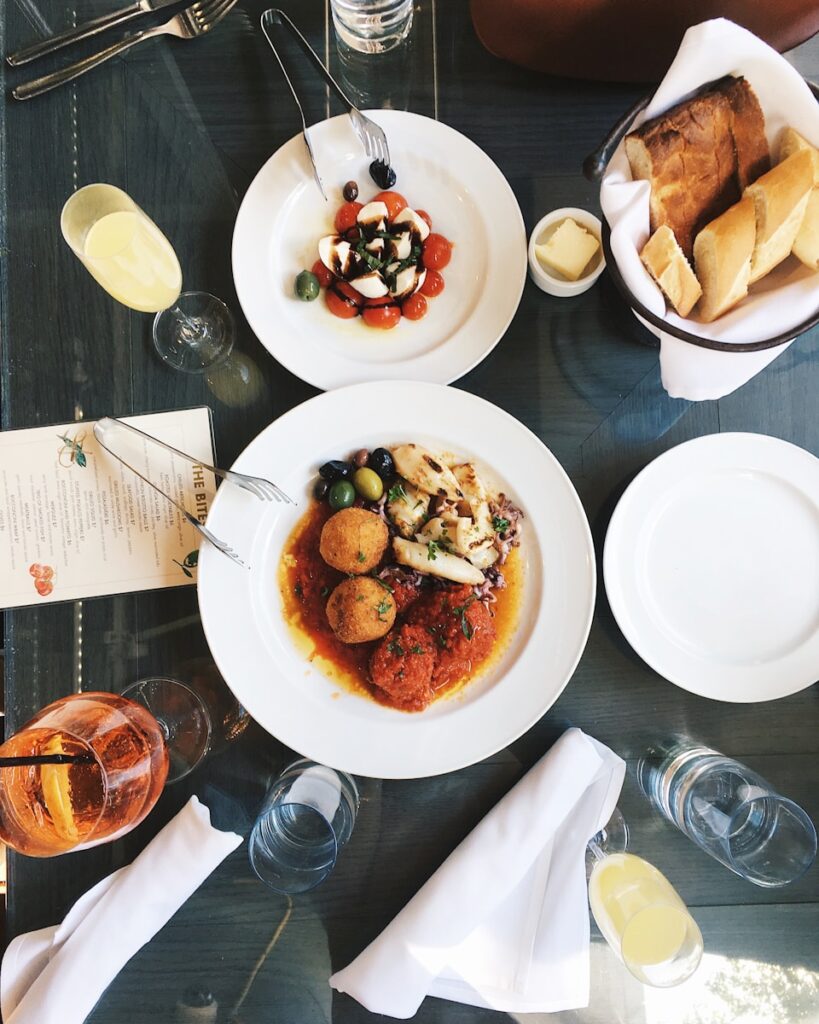Master ‘For Here or To Go’ in Spanish: A Guide to Ordering Food
Imagine you’re in a bustling café in Madrid, the aroma of freshly brewed coffee filling the air. You’re ready to order, but when the barista asks, “¿Para aquí o para llevar?” you freeze. Do you want your food for here or to go? Suddenly, what seemed like a simple question becomes a mini panic attack. We’ve all been there, right?
Exploring a new language can feel like trying to solve a puzzle without all the pieces. But don’t worry, learning how to order food in Spanish is easier than you think. By the end of this article, you’ll confidently respond with “para aquí” or “para llevar” like a local, making your travel experiences smoother and more enjoyable.
Understanding “For Here or To Go” in Spanish Context
You’re traveling through a vibrant market in Barcelona, and suddenly hunger strikes. You find a cozy café and decide to order. The friendly server asks, “¿Para aquí o para llevar?” Don’t worry if it sounds foreign. By the end of this section, you’ll respond confidently.
Basic Translation: “Para Aquí o Para Llevar”
In Spanish, “para aquí” means “for here,” and “para llevar” means “to take away.” Simple, right? These phrases help you communicate how you want to enjoy your meal.
“Para Aquí” – Meaning and Usage
When you say “para aquí”, you’re indicating you’d like to sit down and eat at the establishment. Imagine you’re in a charming Madrid café. The ambiance, the people, and the aroma of freshly brewed coffee make you want to stay. Telling the server “para aquí” lets them know you’re savoring the moment right there.
“Para Llevar” – Meaning and Usage
On the other hand, if you’re on the go and need your food to travel with you, “para llevar” is your go-to phrase. Picture rushing through the bustling streets of Mexico City. You’ve got places to be, but a quick bite sounds perfect. “Para llevar” ensures you get your meal packed to enjoy later.
Cultural Significance in Spanish-Speaking Countries
Understanding these phrases isn’t just about ordering food. It reflects an appreciation for local customs. In Spain, meal times are social experiences. Saying “para aquí” connects you with the local lifestyle, emphasizing relaxation and enjoyment. Conversely, in rapid cities like Buenos Aires, “para llevar” matches the hustle, showing you’re adapting to the rhythm of the locale.
Variations Across Different Spanish-Speaking Regions
Interestingly, while the phrases “para aquí” and “para llevar” are widely understood, local quirks exist. In some regions, you may hear “para comer aquí” (to eat here) or “para tomar aquí” (to drink here). Here’s a handy table for quick reference:
Country | “For Here” | “To Go” |
|---|---|---|
Spain | Para Aquí, Para Comer Aquí | Para Llevar |
Mexico | Para Aquí, Para Tomar Aquí | Para Llevar |
Argentina | Para Aquí | Para Llevar |
Colombia | Para Aquí | Para Llevar |
These variations celebrate the diversity within the Spanish-speaking world. So, why care about learning these phrases? It’s not just about food. It’s about connecting, respecting, and truly experiencing the heart of Spanish culture.
Common Phrases for Ordering Food in Spanish

Ever felt stuck at a restaurant in a Spanish-speaking country, unsure how to order for here or takeout? You’re not alone! Mastering these essential phrases makes dining out much easier and way more fun.
Key Vocabulary for Restaurant Orders
Knowing key terms is crucial when ordering food. Here’s a handy table for quick reference:
Role/Item | Spanish Term |
|---|---|
Server | Mozo/Camarero |
Cook | Cocinero |
Chef | Chef |
Owner | Dueño |
Host | Anfitrión |
Customer | Cliente |
Knife | Cuchillo |
Fork | Tenedor |
Spoon | Cuchara |
Plate | Plato |
Glass | Vaso |
Cup/Mug | Taza |
Napkin | Servilleta |
Check | Cuenta |
These words help in ensuring that you can ask for what you need seamlessly. Imagine asking your Mozo for an extra Servilleta without breaking a sweat!
Useful Sentences for Dining In or Taking Out
When you’re ready to place your order, a few phrases go a long way:
For Here:
To Go:
You’ll notice how polite and straightforward Spanish can be, particularly with a simple “por favor.“
Regional Differences in Ordering Expressions
Just like English, Spanish varies between regions. Knowing the local lingo can make your travels smoother and more enjoyable.
Spain vs. Latin America
In Spain, you might hear “¿Para aquí o para llevar?” frequently, while in many Latin American countries, “para llevar“ is more common. It’s essential to understand subtle differences.
Each place has its flavor in expressions. Embrace these differences, and you’ll blend in seamlessly with the locals.
When to Use “Para Aquí o Para Llevar” in Spanish
Deciding where to enjoy your meal can be a delightful part of the dining experience. Knowing when and how to use “¿para aquí o para llevar?” will not only make your interactions smoother but also connect you with local customs across Spanish-speaking regions.
Fast Food Restaurants
In fast food spots, you often encounter “para aquí o para llevar” when ordering. Picture this: you’re at a bustling McDonald’s in Madrid. The cashier asks, “¿para aquí o para llevar?”. Responding confidently enhances your experience. Opt for “para aquí” if you’re dining in, or “para llevar” for takeout. It’s seamless and shows respect for local norms. If picking up an order, say, “vengo a recoger una orden para [your name]” to specify you’re collecting a pre-made order.
Cafes and Coffee Shops
Though less commonly mentioned, cafes and coffee shops also involve these phrases. Imaging heading into Nyla Cafe in New York. The barista might ask, “¿para aquí o para llevar?” when you order a latte. Use “para aquí” to savor your coffee in a cozy corner, or say “para llevar” if you’re in a rush to catch a subway. Understanding these nuances enriches your experience, even if you’re just grabbing a quick coffee.
Traditional Sit-Down Restaurants
In traditional sit-down establishments, you’re less likely to hear “para aquí o para llevar”. Yet, knowing these phrases can still be useful. Imagine dining at a local tapas place in Seville. After a hearty meal, asking for your leftovers “para llevar” shows your effort to speak the language and appreciate the culture. While it’s not the norm, it reflects your relatability and respect.
Street Food Vendors
Street food spots, especially in vibrant places like Barcelona, offer unique dining vibes. Even though “para aquí o para llevar” might not be explicitly asked, knowing these phrases can still help. Suppose you’re enjoying a late-night snack from a street vendor at 2 a.m. If you want to take it back to your Airbnb, confidently say, “para llevar, por favor”. It personalizes your interaction, enhancing your street food adventure.
Online Food Ordering Platforms
Ordering food online? Master these phrases to enhance your digital food adventures.
Apps and Websites
Modern apps often include an option to choose “para aquí” or “para llevar”. While browsing Uber Eats or Glovo in a Spanish-speaking city, you’ll see these options. Click “para aquí” to eat in-restaurant or “para llevar” for delivery. Navigate these platforms like a local with this understanding.
Delivery vs. Pickup Options
Ordering for delivery or pickup has its language quirks too. If you prefer delivery, choose “para llevar” on an app. For pickups, select “recoger”, and when you arrive, use “vengo a recoger una orden para [your name]”. This ensures clarity and a smooth pickup process.
Context | Phrases |
|---|---|
Fast Food Restaurants | “para aquí o para llevar,” “vengo a recoger una orden para [name]” |
Cafes and Coffee Shops | “para aquí o para llevar” |
Traditional Restaurants | “para llevar” (for leftovers) |
Street Food Vendors | “para llevar” |
Online Platforms | “para aquí,” “para llevar,” “recoger” |
Understanding “para aquí o para llevar” isn’t just about orders; it’s about merging into local life and appreciating the language and culture. By using these phrases confidently, your culinary experiences abroad will be richer and more memorable.
Tips for Proper Pronunciation and Etiquette

Exploring the intricacies of ordering food in Spanish-speaking countries can be both an exciting and daunting experience. Don’t fret; mastering the basics of pronunciation and etiquette helps you blend in seamlessly, making your culinary adventures enjoyable and fulfilling.
Pronunciation Guide for “Para Aquí o Para Llevar”
Getting your order spot-on starts with saying it right. Knowing how to pronounce “para aquí” and “para llevar” helps you sound more natural and confident. Here’s the breakdown:
Imagine you’re in a cozy café in Madrid. The staff will appreciate your effort if you pronounce these phrases correctly. Plus, it’s a fantastic way to show respect for the local language.
Cultural Etiquette When Ordering Food in Spanish
Understanding local customs can enrich your dining experience significantly. Here’s what you need to know:
When you sprinkle in polite phrases like “por favor” (please) and “gracias” (thank you), you’re not just being courteous, you’re making your interaction memorable. If the opportunity arises, watch how locals do it; there’s always something new to learn.
Common Mistakes to Avoid
Avoiding common pitfalls in the language can save you from awkward moments. Here are some key points:
Here’s a quick guide to some common challenges:
Spanish Word | Incorrect Meaning | Correct Meaning |
|---|---|---|
Embarazada | Embarrassed | Pregnant |
Ropa | Rope | Clothing |
Sopa | Soap | Soup |
Understanding these nuances and practicing them boosts your confidence and makes your experience much smoother. Ask yourself: isn’t mastering these small details worth it for a richer cultural experience?
Beyond “Para Aquí o Para Llevar”: Expanding Your Spanish Food Vocabulary
Imagine you’re at a cozy café in Spain, and you’ve just asked, “¿Para aquí o para llevar?” You’re already blending in. But why stop there? Dive deeper and make your dining experiences even richer by knowing a bit more.
Describing Food Preferences in Spanish
Now let’s talk about how you feel about your food. Are you a fan of spicy dishes or a lover of desserts? Here’s how you can express yourself:
When you say, “Prefiero el jamón serrano,” you’re not just saying you prefer it, you’re showing a bit of you.
Asking for Recommendations in Spanish
Curious what the locals are raving about? Don’t just settle for any dish. Here’s how to ask for recommendations:
Imagine saying, “¿Qué me recomienda?” and getting a warm smile with a suggestion that might just become your new favorite.
Expressing Dietary Restrictions or Allergies
Don’t let allergies or dietary preferences hold you back. Here’s how to make sure you’re understood:
Use these phrases and make sure your dining experience is safe and enjoyable. “No como carne” can prevent you from an unexpected surprise.
English Phrase | Spanish Translation |
|---|---|
I like | Me Gusta |
I don’t like | No Me Gusta |
I prefer | Prefiero |
I love | Me Encanta |
I don’t love | No Me Encanta |
What do you recommend? | ¿Qué Me Recomienda? |
What would you recommend from the menu? | ¿Qué Me Recomendaría del Menú? |
I am allergic to | Soy Alérgico a |
I don’t eat | No Como |
I cannot eat | No Puedo Comer |
Do you have a vegan menu? | ¿Tiene Un Menú Vegano? |
Without hot sauce, please | Sin Picante Por Favor |
Practical Examples and Dialogues

Want to nail down your Spanish when ordering food? Here’s a handy guide with practical examples and dialogues to make sure you’re prepared for any scenario.
Ordering Coffee To Go
You’re at your favorite café and craving a quick coffee fix. Knowing a few key phrases helps you navigate the coffee culture smoothly. Next time you’re in line, try saying:
Examples:
Dialogue:
Barista: ¡Hola! ¿Para aquí o para llevar?
You: Para llevar, por favor. Un café con leche.
Barista: Claro, enseguida.
Dining In at a Restaurant
Sitting down to enjoy a meal at a restaurant? You step up your dining experience by using the right phrases.
Examples:
Dialogue:
Waiter: Buenas noches. ¿Qué le gustaría pedir?
You: ¿Puedo ver el menú, por favor?
Waiter: Claro, un momento.
(Time passes…)
You: Quisiera unos tacos y una cerveza. ¿Cuál es la comida típica de esta región?
Waiter: Los tamales son muy populares aquí.
Buying Street Food
Street food can be an adventure. These phrases come in handy when you’re hunting for quick, delicious bites.
Examples:
Dialogue:
Vendor: ¡Buenos días! ¿Qué le damos?
You: ¿De qué tiene?
Vendor: Tenemos tacos de carne y pollo.
You: Me da uno de verde, con todo.
Using Food Delivery Apps in Spanish
Ever tried ordering your favorite food through delivery apps in Spanish? Knowing some phrases can streamline the process.
Common Phrases:
- Open the app.
- Select Entregar a domicilio or Para llevar.
- Choose your food items.
- Select Factura to review your order.
- Add a Propina if you wish.
Conclusion: Mastering “For Here or To Go” for a Better Spanish Experience
Learning how to navigate food orders with “¿Para aquí o para llevar?” opens up a whole new world of cultural experiences. You’ll find that your interactions become more engaging and enjoyable.
Whether you’re grabbing a quick coffee or dining at a cozy restaurant, knowing these phrases makes everything smoother. Plus, it shows respect for the local culture which always goes a long way.
So next time you’re in a Spanish-speaking country don’t hesitate to use your new skills. You might even discover a new favorite dish or make a new friend along the way.
Frequently Asked Questions
What does “¿Para aquí o para llevar?” mean?
“¿Para aquí o para llevar?” means “For here or to go?” in English. It’s commonly used in Spanish-speaking countries when ordering food to ask if you want to eat on the premises or take it with you.
Why is it important to ask “¿Para aquí o para llevar?” in Spanish-speaking countries?
Asking “¿Para aquí o para llevar?” helps ensure your food is prepared according to your preference and shows cultural understanding, enhancing your dining experience and interaction with locals.
How do you correctly pronounce “¿Para aquí o para llevar?”?
Pronounce it as: “pah-rah ah-kee oh pah-rah yeh-VAR.” Practice makes perfect, so repeat it a few times for better pronunciation.
What other phrases are useful when ordering food in Spanish?
Phrases like “Me gustaría” (I would like), “¿Qué recomienda?” (What do you recommend?), and “Tengo alergias alimentarias” (I have food allergies) are very useful when ordering food in Spanish.
How can you improve your food vocabulary in Spanish?
You can improve your food vocabulary by practicing key terms, using language apps, watching Spanish cooking shows, and regularly dining at Spanish-speaking restaurants.
How do you express preferences when ordering food in Spanish?
To express preferences, use phrases like “Prefiero” (I prefer), “Sin” (without), and “Con” (with). For example, “Prefiero mi café sin azúcar” (I prefer my coffee without sugar).
What should be considered when asking for food recommendations in Spanish?
When asking for recommendations, be polite and specific. You can say, “¿Qué me recomienda para la cena?” (What do you recommend for dinner?) followed by any dietary preferences or restrictions.
How do you address dietary restrictions when ordering food in Spanish?
Address dietary restrictions directly by saying, “Tengo alergias a…” (I am allergic to…) or “No puedo comer…” (I can’t eat…). It’s important to clearly communicate any food limitations.
Are there practical examples for ordering coffee in Spanish?
Yes, a practical example would be: “Un café con leche, por favor” (A coffee with milk, please).
How do you order food in a restaurant in Spanish?
Begin with a greeting, then order your food. For example, “Buenas tardes, me gustaría una paella, por favor” (Good afternoon, I would like a paella, please).
What phrases are used when buying street food in Spanish?
When buying street food, you can say, “Quisiera una empanada, por favor” (I would like an empanada, please).
How do you use food delivery apps in Spanish?
To use food delivery apps, familiarize yourself with common terms like “Entregar a domicilio” (Home delivery) and “Ordenar comida” (Order food). Most apps have similar interfaces to their English versions, making them easy to navigate.






